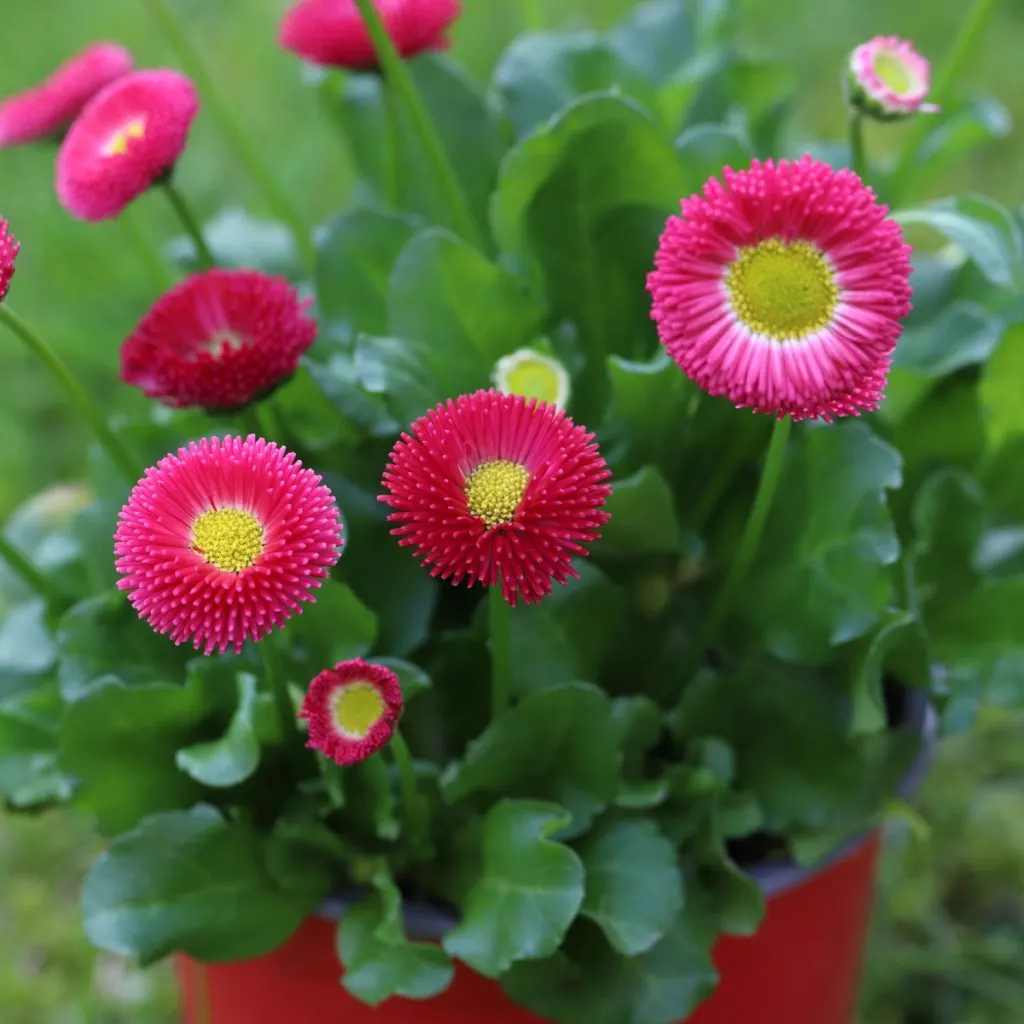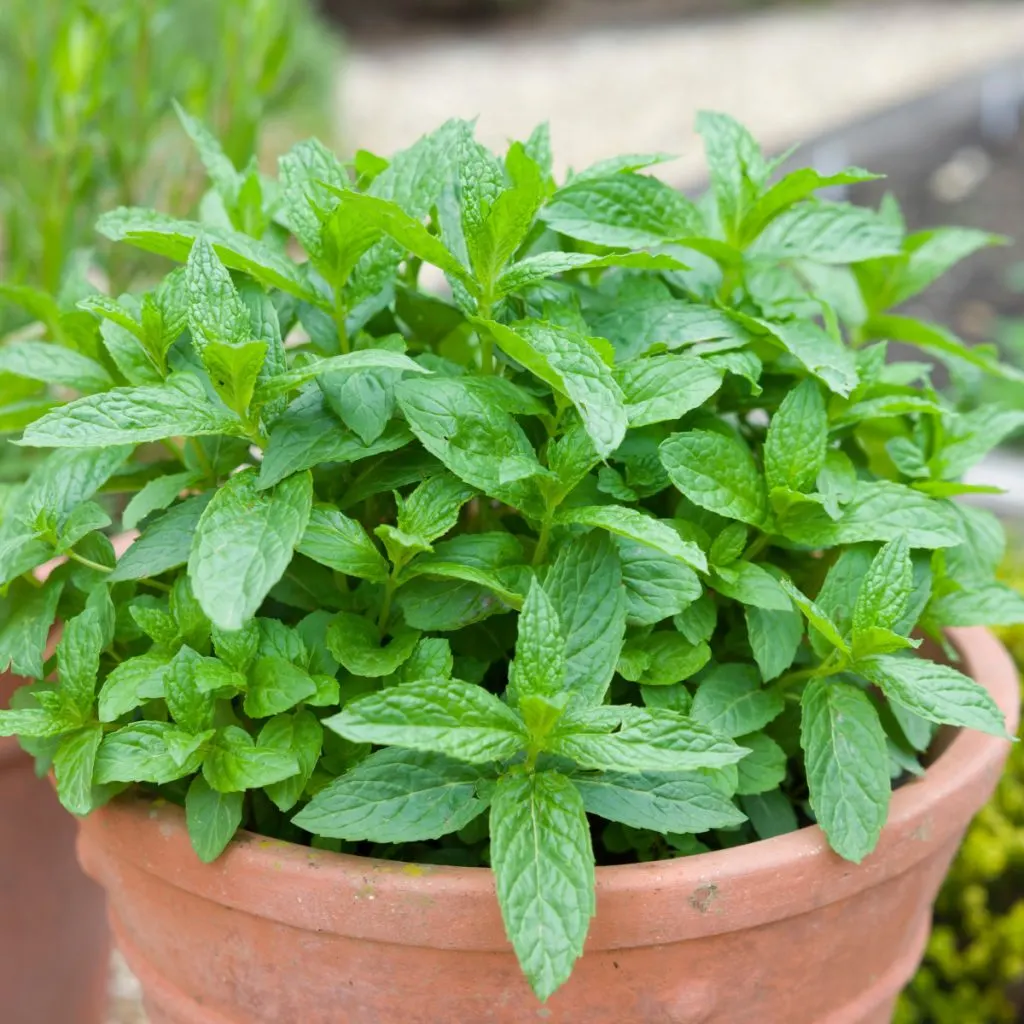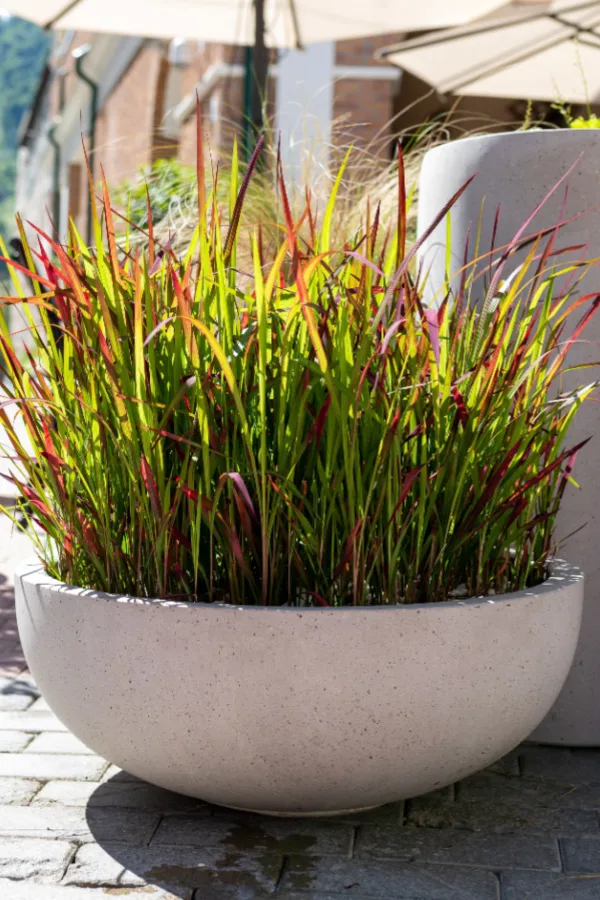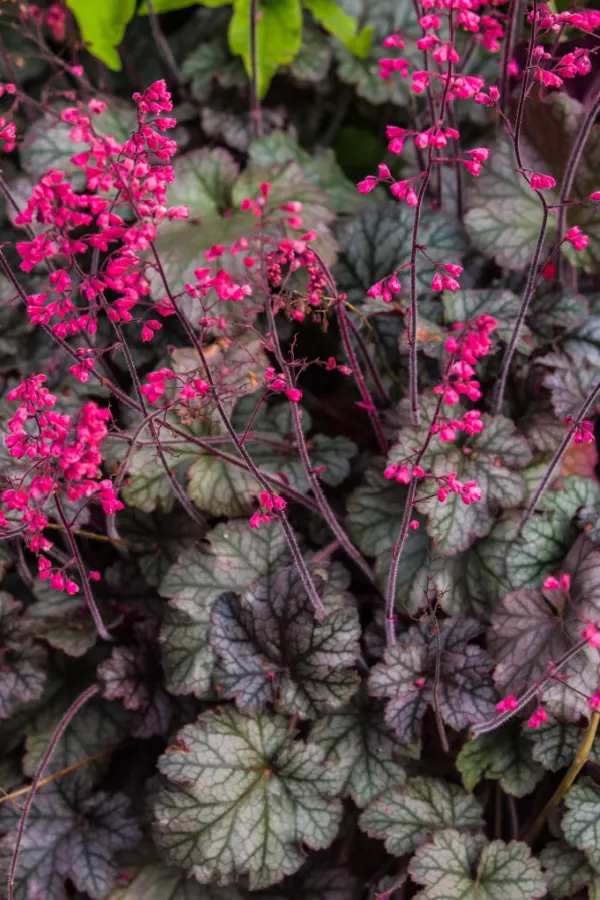One of the easiest and most inexpensive ways to create and make gorgeous containers and potted plants for your patio, deck and patio areas is to pot them up with perennials!
Not only are there a whole slew of perennials that make incredibly stunning, low maintenance container plants, they can also be used year after year, which can be a huge savings on the budget. Especially if you can use some of the perennials you already grow in your flowerbeds,
Although traditional flowering annuals can be beautiful in containers, they can also be quite expensive to repurchase every year. In addition, annuals require constant care with watering, fertilizing and deadheading. And even with all of that – by mid summer – many annual flowering pots begin to fade fast.

One thing is for sure, it’s a lot of money to spend on annual flowers that rarely make it more than a few months. And even if they do last most of the summer, with annuals, the end of the growing season spells the end of the road.
But that is exactly where potting up a few perennial plants can save the day. Using perennial plants to fill pots and containers, or using them in conjunction with a few annuals to add a splash of vibrant all season color is an excellent, low-cost method for adding lasting beauty to porches, patios, or anywhere in the landscape you wish.
Even better, by using existing plants already found in your landscape, you can save by never having to re-purchase plants. All you do in the fall is simply replant them into the ground for the winter, and then dig them back up to reuse them again next spring!
How To Pot Up Perennials In Containers – Create Gorgeous Potted Plants For Free!
The Advantages of Using Perennials In Containers – How To Pot Up Perennials In Containers
The advantages of using perennials in containers go far beyond just the cost savings. They are also far easier to plant and maintain throughout the growing season than annuals.
Most annuals require watering every day in order to survive. In fact, in some cases, they can require water in the morning and evening just to make it through a hot summer day. Annual flowers also often require constant deadheading to force new blooms, as well as frequent fertilization to stay productive.

But perennials, by their very nature, do not require as much water, fertilizer or attention as annual flowers. In fact, many perennial varieties can go a few days or more in containers without the need for water.
They also don’t have to be planted in premium potting soil to survive and thrive. The large majority of perennials can be potted up in a container using a simple 50/50 mix of garden and potting soil. That means far less cost and hassle at planting time!
And when it comes to fertilizing? Well, perennials once again take and require far less nutrients from the soil. When planted in containers, a few light doses of fertilizer can keep perennials strong all season long. That’s quite an improvement over annuals that need a boost every few weeks.
But perhaps the best thing about using perennials in containers is what happens in the fall. Instead of throwing a basket full of dying annuals in the compost pile – you can save your perennials by overwintering them in the landscape.
Listen In Below To Our Podcast On Potting Up Perennials!
Even better, if the plant has grown in size, you can divide it to create additional plants for next year. It is truly the ultimate in recycling container plants – and a practice that can save big year in and year out on a garden budget!
Using Perennial Plants For Pots & Containers – How To Pot Up Perennials In Containers
All kinds of perennials are ideal for container planting. Coral bell, hostas, day lilies, sedum and daisies all thrive in pots and containers. As do blanketflower and hardy geraniums. But you can also add big interest with ornamental grasses and small perennial bushes such as boxwoods and hydrangeas.
In fact, the list of perennials you can plant in containers is near endless. The real key is to select perennials that have bright or interesting foliage to provide interest all season long, even when they’re not in full bloom.
Another great combination is to use perennials with a few big flowering annuals as accents. This cuts down on having a huge flower budget of annuals, but still provides plenty of flower power for your pots and container plants.
Finding Low Cost Perennials For Your Pots – How To Pot Up Perennials In Containers
The easiest and least costly method for creating perennial planters is to select from the existing perennials growing in your landscape. For this, simply dig up plants or divide a small section off in the spring and transplant.

But even if you don’t currently grow a lot of perennials, you can still save big on plants! Smaller perennial starts are among the most affordable of all in nurseries and garden centers. And these smaller sizes are absolutely perfect to grow in containers.
Our Top Tips For Planting Perennials In Containers – How To Pot Up Perennials In Containers
Planting perennials into containers really is a breeze. Select perennial plants whose roots are about 50% of the size of your container. This gives them plenty of space to expand without running out of room. The good news is that perennial roots grow far slower than annual plant’s roots. Because of this, there is little worry of them outgrowing their space in a single season.
Perennials can survive in far less fertile soil than annuals. To pot up, use a 50/50 mix of potting soil and garden soil. We like to add a cup of perlite into the soil mix for each pot. Perlite is 100% organic and keeps soil lighter. Even more, it stops soil from compacting in the container. Affiliate Product Link: Harris Premium Horticultural Perlite for Plants
Always be sure your containers have plenty of drainage holes. Most perennials suffer more from overly wet soil than under watering, so good drainage is a must. It’s also a great idea to mulch the tops of your containers to help control moisture and soil temperatures.
Fertilizing And Overwintering – How To Pot Up Perennials In Containers
For most perennials, fertilizing twice during the growing season will provide more than enough nutrients. Fertilize a few weeks after transplanting, and once more as they begin to bloom. An all purpose, balanced, granular fertilizer will work best for this. Affiliate Link: Southern Ag All Purpose Granular Fertilizer 10-10-10

In mid to late fall, it’s time to transplant the perennials back into the soil for winter. Although you can keep some perennials in pots all winter, it can be hard to protect them from freezing out. The pots simply don’t give the protection soil does. See our article: How To Divide Your Perennials – Create More Plants For Free!
One of the best places for overwintering perennials is in flowerbeds or garden spaces. Most of these areas are more open through the winter months. Once you transplant, mulch the plants and water them in to help them establish in the soil. If you plan to keep them in pots over the winter, be sure to check out: 3 Easy Ways To Protect Potted Perennials From Winter Damage.
The good news is that after a year or two of growth, you can often divide the perennials to create even more plants for your flowerbeds – or for more containers. Now if you are looking for a low-maintenance annual that is also practically pest-proof, see Growing Coleus In Containers – The Most Colorful, Best Pest Proof Plant Around! Here is to potting up perennials – and filling your landscape with low cost containers year after year!
This Is My Garden
Follow Our Facebook Page For Great Gardening Tips And Advice! This Is My Garden Facebook Page
This Is My Garden is a garden website created by gardeners, for gardeners. Jim and Mary Competti have been writing gardening, DIY and recipe articles and books and speaking for over 15 years from their 46 acre Ohio farm. They publish three articles every week, 52 weeks a year. Sign up today to follow via email, or follow along!
